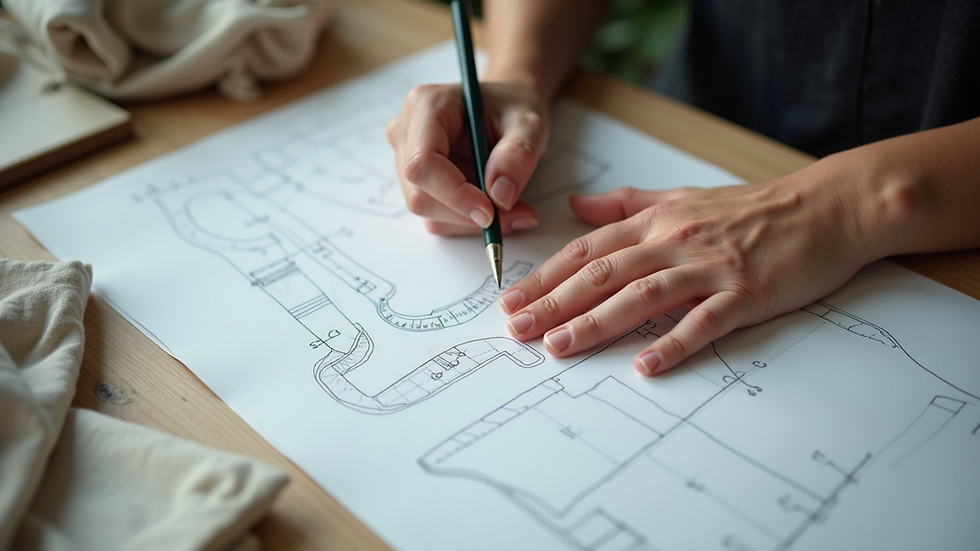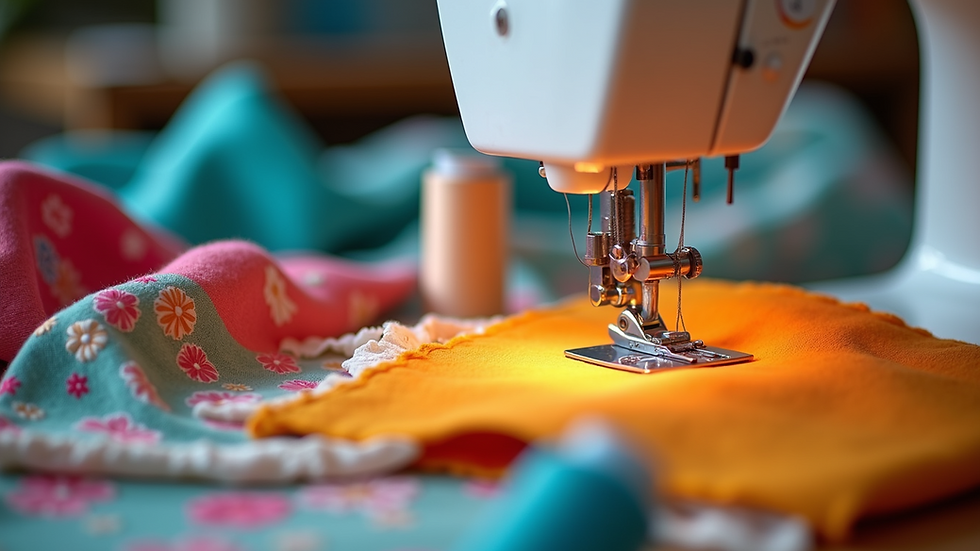Easy Sewing Patterns to Jumpstart Your First Beginner Sewing Project
- Gellis Jerome-Milandou

- Aug 17
- 4 min read
Starting your first sewing project can feel overwhelming, but with the right patterns and guidance, it becomes an enjoyable and rewarding experience. Choosing easy sewing patterns is the key to building confidence and mastering basic skills. This post will guide you through simple projects perfect for beginners, practical tips on tracing patterns, and how to select the best materials to ensure your success.
Simple Beginner Sewing Projects to Try Today
When you’re new to sewing, it’s best to start with projects that are straightforward and require minimal pieces. Here are some beginner sewing projects that are both fun and practical:
Tote Bags: A tote bag is a fantastic first project. It involves straight seams and simple shapes, making it easy to sew and customize with different fabrics.
Pillow Covers: Sewing a pillow cover helps you practice sewing straight lines and inserting zippers or buttons.
Drawstring Bags: These bags are simple to make and teach you how to create casings for the drawstring.
Simple Skirts: A basic elastic waistband skirt is a great introduction to garment sewing without complicated closures.
Aprons: Aprons are easy to sew and useful around the house or kitchen.
Each of these projects helps you build foundational skills like cutting fabric, sewing straight seams, and finishing edges. Starting with these will give you a sense of accomplishment and encourage you to try more complex patterns.

How to Choose the Right Fabric and Tools for Beginner Sewing Projects
Selecting the right fabric and tools can make your first sewing experience much smoother. Here are some tips to help you get started:
Fabric Choice: Choose cotton or cotton blends for your first projects. These fabrics are easy to handle, cut, and sew. Avoid slippery or stretchy fabrics until you gain more experience.
Tools You Need:
- A good pair of fabric scissors
- Pins or clips to hold fabric pieces together
- A sewing machine (or hand sewing needles if you prefer)
- Measuring tape and a ruler
- Marking tools like tailor’s chalk or fabric pens
Thread: Use all-purpose polyester thread for durability and ease of use.
Patterns: Start with simple patterns that have clear instructions and few pieces.
Having the right materials will reduce frustration and help you focus on learning sewing techniques.

How to Trace a Sewing Pattern for Beginners?
Tracing a sewing pattern accurately is an important step that ensures your project pieces fit together perfectly. Here’s a step-by-step guide to help you trace your first pattern:
Prepare Your Workspace: Use a large, flat surface with good lighting.
Gather Materials: You will need tracing paper, a pencil or fabric marker, and pattern weights or pins.
Lay Out the Pattern: Place the original pattern on the table and secure it with weights or pins.
Position the Tracing Paper: Place the tracing paper over the pattern, making sure it covers all the pieces you need.
Trace the Outline: Carefully trace around the edges of each pattern piece, including all markings such as darts, notches, and grainlines.
Add Seam Allowances: Some patterns include seam allowances, but if yours doesn’t, add them now (usually 1/4 to 5/8 inch).
Label Each Piece: Write down the pattern piece name, size, and any other important information.
Cut Out the Traced Pieces: Cut along the traced lines carefully.
Tracing patterns helps preserve the original and allows you to make adjustments or reuse the pattern multiple times.

Tips for Using Sewing Patterns for Beginners
When you’re ready to start sewing, using the right patterns can make all the difference. Here are some tips to help you get the most out of your sewing patterns:
Start with PDF Patterns: These are easy to download, print, and assemble at home. They often come with detailed instructions and illustrations.
Read Instructions Thoroughly: Before cutting fabric, read the entire pattern guide to understand the steps.
Use the Right Size: Check the size chart carefully and measure yourself or your intended recipient to choose the correct size.
Practice on Scrap Fabric: If you’re unsure about a step, try sewing it on scrap fabric first.
Take Your Time: Don’t rush. Sewing is a skill that improves with patience and practice.
For a great selection of easy-to-use sewing patterns for beginners, check out online resources that offer clear instructions and beginner-friendly designs.
Building Confidence with Your First Sewing Projects
Completing your first sewing projects will boost your confidence and inspire you to try more challenging designs. Here are some ways to keep motivated:
Celebrate Small Wins: Every finished seam and project is progress.
Join Sewing Communities: Online forums and social media groups can offer support and advice.
Experiment with Customization: Add your own touches like embroidery, appliqué, or fabric paint.
Keep a Sewing Journal: Document your projects, what you learned, and what you want to try next.
Set Realistic Goals: Start with small projects and gradually increase complexity.
Remember, sewing is a journey. Each project teaches you new skills and brings you closer to becoming a confident maker.

Next Steps to Enhance Your Sewing Skills
Once you’ve mastered easy beginner sewing projects, you can explore more advanced techniques and patterns. Consider:
Learning how to sew zippers and buttonholes
Trying garment construction with fitted patterns
Experimenting with different fabrics like knits or silks
Taking online sewing classes or workshops
Creating your own custom patterns
With practice and patience, sewing can become a lifelong hobby or even a source of income. Start simple, stay curious, and enjoy the creative process!




Comments